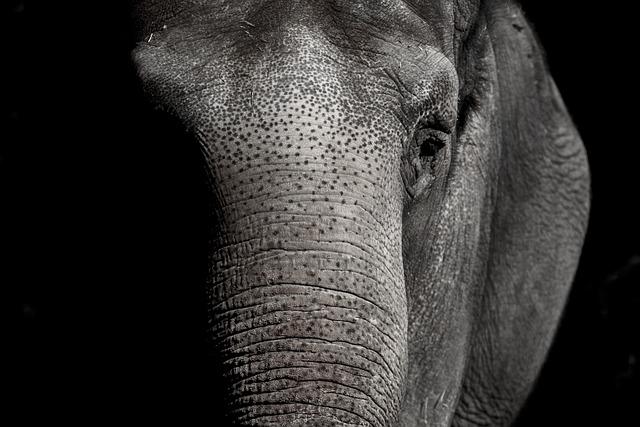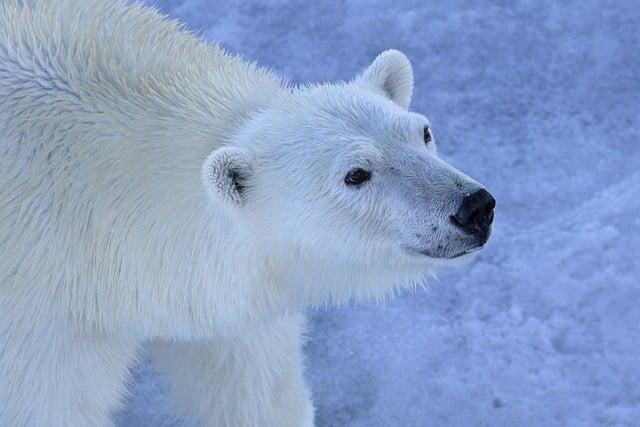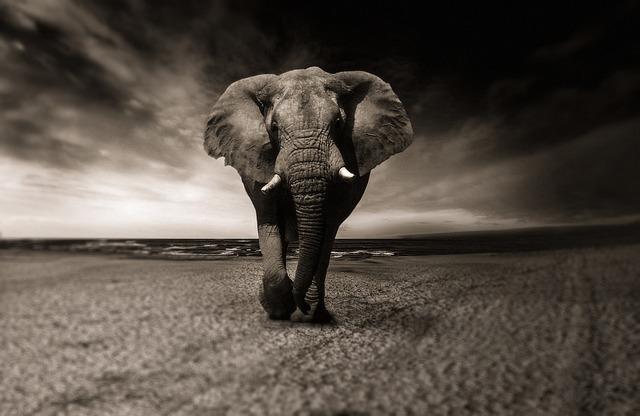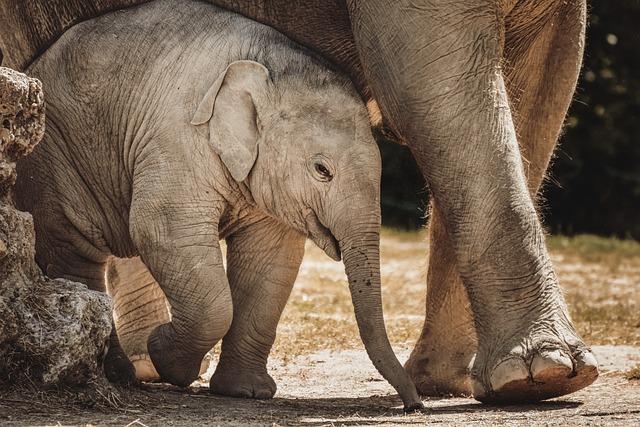In a notable transfer for flora and fauna conservation and regional biodiversity, 26 elephants have been lately relocated from Namibia to Angola’s handiest non-public conservation space. This historical switch, facilitated via quite a lot of conservation organizations, goals to strengthen elephant populations in Angola whilst selling eco-tourism and habitat recovery. The elephants, transported around the border, constitute now not handiest an important step in protecting those majestic creatures but in addition an likelihood to toughen ecological steadiness in a area lengthy suffering from environmental demanding situations. As Angola seeks to revitalize its flora and fauna heritage, this relocation is poised to play a crucial function in fostering a sustainable long term for each the elephants and the communities surrounding the conservation space. This article delves into the logistics of the relocation, the conservation efforts concerned, and the wider implications for flora and fauna control in southern Africa.
Elephants on the Transfer: A Landmark Switch from Namibia to Angola
The fresh relocation of a herd of 26 elephants from Namibia to Angola’s handiest non-public conservation space marks a vital step in flora and fauna preservation and regional biodiversity. This in moderation orchestrated switch goals to strengthen elephant populations in Angola, the place habitat recovery efforts are underway following years of poaching and habitat loss. The elephants, decided on for his or her adaptability and familial bonds, are anticipated to thrive within the lush landscapes in their new house, which supplies abundant assets for his or her long-term survival. The initiative now not handiest helps the migration of those majestic creatures but in addition fosters group engagement and ecotourism alternatives within the area.
This outstanding enterprise concerned meticulous making plans, collaboration throughout organizations, and in depth veterinary exams. Highlights of the venture come with:
- Collaboration with conservation ngos: This helps sustainable practices and group consciousness.
- Cautious tracking throughout transit: Making sure the well being and protection of the elephants all the way through the adventure.
- Engagement with native communities: Fostering a way of stewardship over the newly relocated elephants.
- Lengthy-term conservation objectives: Setting up a self-sustaining inhabitants that may roam freely in a safe atmosphere.
| Elephant Switch main points | Main points |
|---|---|
| Collection of elephants | 26 |
| Foundation | Namibia |
| Vacation spot | Non-public Conservation space, Angola |
| Function | Biodiversity enhancement |
| Date of Switch | October 2023 |

Figuring out the Significance of Angola’s Non-public Conservation Spaces
Non-public conservation spaces in Angola play a the most important function in the wider context of flora and fauna control and ecological preservation.Those sanctuaries be offering a secure haven for endangered species, advertise biodiversity, and give a contribution to the sustainability of the most important ecosystems. Through running independently from governmental frameworks, those non-public reserves have the flexibility to put into effect leading edge conservation methods adapted to native prerequisites.Additionally they supply much-needed investment for conservation efforts thru eco-tourism, bearing in mind reinvestment in flora and fauna coverage and habitat recovery.
Additionally, the interconnectedness of personal conservation spaces with surrounding landscapes complements their effectiveness. Such collaborations can result in the status quo of flora and fauna corridors that facilitate the secure motion of species, just like the lately relocated elephants from Namibia. Those corridors are crucial for keeping up genetic variety and growing solid populations. Moreover, non-public conservation tasks regularly have interaction native communities, fostering collaboration and lengthening consciousness of the significance of protecting flora and fauna. This symbiotic dating can empower communities economically whilst making sure the security of Angola’s precious herbal heritage.

Demanding situations Confronted Throughout the Relocation Procedure
The relocation of 26 elephants from Namibia to Angola’s handiest non-public conservation space was once fraught with a large number of demanding situations, every not easy meticulous making plans and execution.Some of the number one stumbling blocks was once making sure the well being and protection of the animals throughout their lengthy adventure. this concerned in depth veterinary tests, tracking of conceivable pressure signs, and the cautious collection of shipping automobiles that will give you the important convenience and safety. The logistics of coordinating a large-scale transfer whilst navigating global borders can be complicated, requiring collaboration between a number of governmental and non-governmental companies.
Moreover, the native ecological prerequisites of the conservation space posed demanding situations for the combination of the elephants. Figuring out the habitat’s traits was once the most important for the completed acclimatization of the elephants. Components similar to meals availability, water resources, and attainable human-wildlife battle zones mandatory thorough review.The group additionally prioritized group engagement to make sure that native citizens have been knowledgeable and concerned within the procedure, in the long run fostering a sense of possession and stewardship over the newly relocated elephants. Addressing those demanding situations was once crucial now not just for the elephants’ well-being however additionally for the long-term luck of conservation efforts in the area.

Biodiversity and Ecosystem Advantages of Resettling Elephants
The relocation of 26 elephants from Namibia to Angola’s non-public conservation space gives a beacon of hope for biodiversity conservation within the area. Elephants play a crucial function in keeping up the ecological steadiness as they’re referred to as “keystone species.” Their actions, similar to foraging, create pathways for different animals and stimulate the expansion of recent crops.the creation of those elephants can result in enhanced biodiversity in different tactics:
- Habitat Introduction: As elephants traverse the panorama, their feeding conduct open up dense crops, permitting daylight to achieve the woodland ground and selling the expansion of quite a lot of plant species.
- Seed Dispersal: Elephants devour end result and disperse seeds thru their dung, assisting in plant replica and contributing to richer plant variety.
- Water Control: Their actions would possibly create herbal water holes that lend a hand maintain quite a lot of flora and fauna species throughout dry seasons.
This relocation initiative now not handiest promotes ecological recovery but in addition has important implications for the native ecosystem. The elephants’ presence in Angola’s conservation space is anticipated to toughen ecological resilience, offering habitats for a large number of different species and fostering a extra various meals internet. additional, the initiative may stimulate conservation consciousness and eco-tourism, reaping benefits native communities thru sustainable economic opportunities. A comparability of biodiversity parameters earlier than and after the relocation may give insights into its affect:
| Parameter | Earlier than Relocation | After Relocation (Projected) |
|---|---|---|
| Collection of Plant Species | 150 | 200+ |
| Moderate Natural world Sightings | 10/day | 20+/day |
| Vacationers Once a year | 100 | 500+ |

Neighborhood Involvement and Financial Alternatives in Conservation
Efforts to relocate 26 elephants from Namibia to Angola’s handiest non-public conservation space mark a important step against fostering community involvement in flora and fauna conservation. Attractive native communities is very important in those tasks, because it creates a way of possession and accountability against the flora and fauna and ecosystem. Partnerships between conservation organizations and native citizens can result in sustainable practices that get advantages each the atmosphere and the economic system. Right here are some important facets of group involvement:
- Training and Consciousness: Systems that tell citizens in regards to the ecological significance of elephants and biodiversity.
- Native Employment: Activity alternatives coming up from conservation efforts, similar to ecotourism and park control.
- Cultural Heritage: Encouraging the popularity and preservation of indigenous practices associated with flora and fauna control.
The commercial attainable related to conservation tasks can considerably toughen native livelihoods. Through integrating communities into conservation efforts, there’s a pathway not to handiest offer protection to flora and fauna but in addition to boost economic resilience. The creation of sustainable tourism can be an financial motive force, offering assets to native households whilst selling a wholesome ecosystem. An research of conceivable advantages is as follows:
| Financial alternatives | Doable Advantages |
|---|---|
| ecotourism Tasks | Earnings technology thru flora and fauna excursions and reports. |
| Neighborhood-Primarily based Initiatives | Get entry to to investment and assets for native development. |
| Conservation Training | Ability-building for sustainable practices and jobs. |

Long run of Conservation Efforts in Southern Africa and Suggestions for Luck
The hot relocation of 26 elephants from Namibia to Angola’s sole non-public conservation space indicates a crucial step in the continuing undertaking to strengthen flora and fauna populations and maintain biodiversity throughout Southern Africa. This initiative displays a broader pattern that emphasizes the significance of cross-border conservation efforts. Through fostering collaborative relationships between other international locations and conservation organizations, the area can toughen genetic variety whilst restoring ecological steadiness. key strategies include:
- Collaborative Insurance policies: Setting up joint control frameworks that inspire useful resource sharing.
- Neighborhood Involvement: Attractive native communities in conservation efforts to make sure sustainable practices.
- Analysis and Tracking: Imposing ongoing medical exams to evolve methods according to data-driven insights.
Moreover, leveraging era can considerably give a boost to the potency and effectiveness of conservation tasks. Equipment similar to drones for tracking flora and fauna and GPS monitoring methods for working out migration patterns may give precious information for each researchers and conservationists. Enhanced investment mechanisms, most likely thru eco-tourism and global partnerships, can ensure that long-term venture sustainability. Beneath is a framework summarizing crucial suggestions for long term conservation luck:
| Proposal | Description |
|---|---|
| Built-in Conservation Methods | Mix efforts throughout borders for unified flora and fauna control. |
| Strengthening Coverage Frameworks | Replace and harmonize laws that govern flora and fauna coverage. |
| Public Consciousness Campaigns | Teach communities in regards to the worth of biodiversity and conservation. |
Concluding Remarks
the relocation of 26 elephants from Namibia to angola’s handiest non-public conservation space marks a vital milestone in flora and fauna conservation efforts within the area. This formidable initiative now not handiest goals to strengthen the dwindling elephant inhabitants in Angola but in addition to foster biodiversity and advertise ecological resilience throughout the conservation space. As groups paintings to observe the elephants’ adaptation to their new atmosphere, this undertaking underscores the urgency of cross-border cooperation in conservation and the important function of safe spaces in safeguarding Africa’s distinctive flora and fauna. The luck of this translocation may function a fashion for equivalent tasks one day, highlighting the significance of collaborative efforts in making sure the survival of endangered species. because the eyes of conservationists and ecologists flip towards Angola, the hope is that those majestic creatures will thrive of their new house, paving the best way for a brighter long term for each the elephants and the ecosystems they inhabit.
Source link : https://afric.news/2025/02/20/26-elephants-from-namibia-moved-to-angolas-only-private-conservation-area-mongabay-com/
Writer : Samuel Brown
Submit date : 2025-02-20 10:51:00
Copyright for syndicated content material belongs to the related Source.



